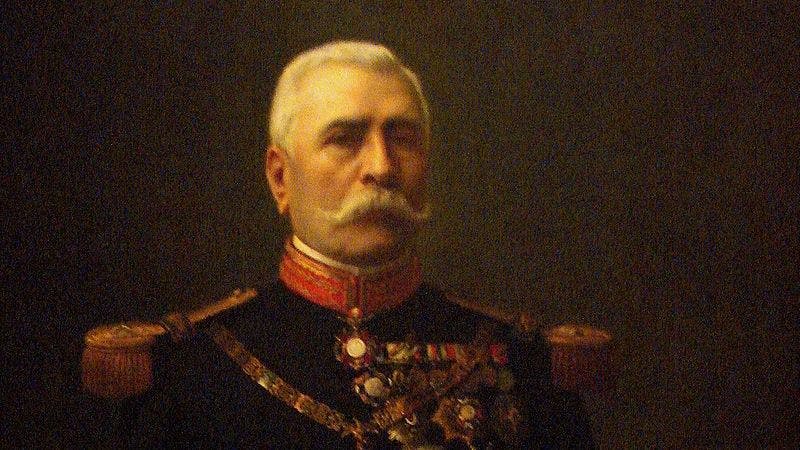September 7, 2021
•
5 min read
People of Mexican History: Porfirio Díaz
He ruled Mexico with an iron hand for 30 years, and it would take a revolution to get him out of power. However, was he the despot history makes him out to be? Hear both sides of the argument. Learn about one of the most famous figures in Mexican history: Porfirio Diaz. Click here to learn all about this!
Rafael Bracho
Insurance Expert
When you’re an expat, it can be difficult joining in discussions when the conversation turns to the people of Mexican history. Therefore, Expat Insurance decided to release a series on these individuals to better help prepare those expats living in Mexico. In our second article in the series, we decided to cover the controversial figure: Porfirio Díaz.
We hope you will join us in the coming weeks as we explore other figures in Mexican history!
Introduction:
People of Mexican History
One of the most famous people in Mexican history, Porfirio Díaz was a general and political figure who served as the president of Mexico for a total of 31 years. He has come to dominate political discussions in Mexico due to his prominence during a tumultuous part of Mexican history—and throughout his time in Mexican politics, he has engendered an unresolved controversy in the minds of the Mexican population. This period is one of the most romanticized periods of Mexican history, and it has come to be known as the Porfiriato.
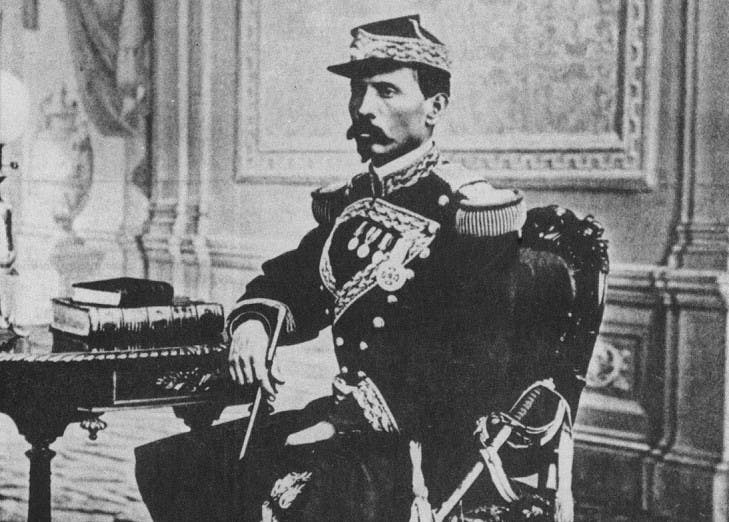
The Early Life of Porfirio Díaz:
People of Mexican History
Though the actual date of Porfirio Díaz’s birth is unknown, he was baptized in the Mexican state of Oaxaca on the 15th of September, 1830. He was born the sixth of seven children to a woman who was the child of a Spanish immigrant and an indigenous woman. His father was a criollo—or a Mexican whose lineage was almost entirely of European descent—making Porfirio Díaz a castizo. His father was a modest innkeeper who died when Díaz was three years old.
Though Porfirio Díaz was raised in poverty, the family managed to send him to school from the age of 6. Due to his family’s deeply religious views, Porfirio Díaz began studying to be a priest at age 15. He attended El Colegio Seminario Conciliar de Oaxaca. He was offered a position as a priest in 1846, but Díaz decided instead to join a religious students organization dedicated to volunteering as soldiers during the Mexican-American War. He would see no military action, but nonetheless, this position solidified Porfirio Díaz’s future in the Mexican military.
By 1849, Porfirio Díaz had abandoned his religious career to pursue his studies in law. During this period, he began to find himself drawn to radical liberal ideology—at a time when the general and politician Lopez de Santa Anna had begun to persecute liberals. Porfirio Díaz managed to evade arrest and fled to the northern mountains of Oaxaca where he joined the rebels under the influential Juan Álvarez. He would continue fighting until Santa Anna’s government was overthrown and Anna was forced into exile in Cuba in 1855. For his loyalty, Porfirio Díaz was awarded a position as an administrator in Ixtlán, Oaxaca.
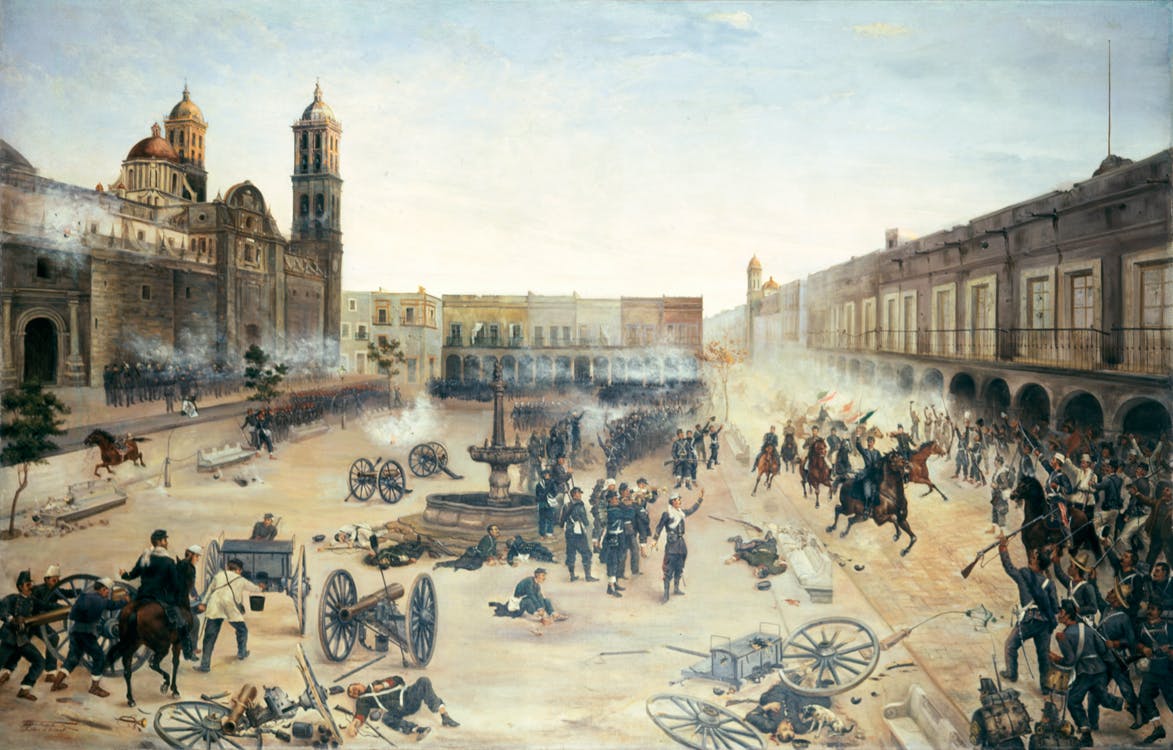
The Military Career of Porfirio Díaz:
People of Mexican History
Some of our longtime-readers may recall from our article on Maximilian I or our article on Cinco de Mayo, the French invaded Mexico in 1861 in hopes of establishing an empire in the Americas. By this time, Porfirio Díaz had managed to attain the rank of general and would soon be instrumental fighting off the French at the Battle of Puebla (on the fifth of May, 1862). He disobeyed direct orders from General Ignacio Zaragoza, and instead defended his position centered directly between forts Guadalupe and Loreto. After successfully repelling the attack, he pursued the battered French forces and was in the end commended for his “brave and notable” actions.
In 1863, he was briefly captured by the French Army, but he managed to escape. Upon his arrival with the Mexican forces, the Mexican president Benito Juarez appointed him as Secretary of Defense—a position that would have effectively made him commander of the Mexican army. He declined the position, instead, he accepted a lesser position as the commander of the Central Army. That same year, he was promoted to Division General.
Though Porfirio Díaz was offered a position in Maximilian I’s loyalist army, he declined. In 1865 he was captured again, and yet again managed to escape incarceration to fight battles in Piaxtla, Tulcingo, Tehuitzingo, Comitlipa, Nochixtlán, La Carbonara, Miahuatlán, and finally the battle to retake Oaxaca. Time and time again, he was offered positions of power by the loyalist army—even being offered full command of Maximilian I’s imperial army—yet every time he declined. On April 2nd, 1867, he led the rebel forces to retake the city of Puebla in the final battle of the war.
The Early Political Career of Porfirio Díaz:
People of Mexican History
In 1868 after the war, Porfirio Díaz returned to his home state of Oaxaca—completely resigning his military career. Though Díaz had helped secure Benito Juárez’s return to the Mexican presidency, he began to openly condemn the Juarez administration. Soon, Porfirio Díaz’s ambitions of power turned his eye toward politics.
By 1870 he was actively running for president against Juárez and another candidate named Lerdo de Tejada. Porfirio Díaz lost the election in what he proclaimed publicly to be rigged elections. The following year, in response, Porfirio Díaz called for revolution and several people took up arms—including General Manuel González of Tamaulipas. However, Díaz’s supporters were defeated by early 1872. A few months after that, in mid-1872 Benito Juárez would die of natural causes and Lerdo de Tejada would become President.
Lerdo’s time in office was filled with his own opposition and by 1874, Lerdo was facing a major rebellion by tribal leaders in the north of Mexico. Meanwhile, Porfirio Díaz had decided to move to Veracruz and he was soon elected to Congress there. Instead of running for election again, instead, Díaz decided to do what he did best. In January of 1876, he launched a military insurrection from his home state of Oaxaca. Though his forces were initially defeated—and Díaz was even forced to flee to the US for a short time—by November of 1876 Porfirio Díaz defeated Lerdo’s forces in the Battle of Tecoac and went on to occupy Mexico City.
Porfirio Díaz would condemn Lerdo to exile in New York, and in his place, he instilled an interim president for less than a year. In 1877, he would hold elections where he ran on the platform that there should be no re-elections, which would later become ironic. During these elections, Díaz emerged victorious. He was finally president of Mexico.
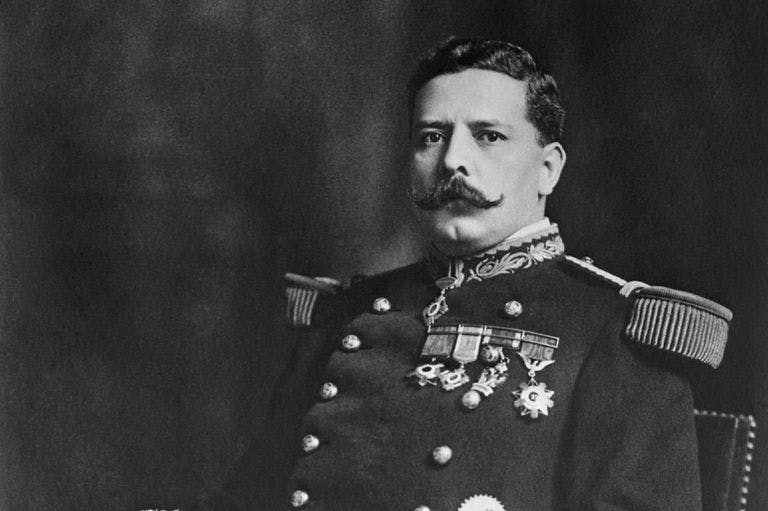
El Porfiriato – Díaz’s First Term as President:
People of Mexican History
Díaz’s first years in office were characterized by the struggle with the United States to officially recognize Porfirio Díaz’s presidency—which would officially secure his legitimacy internationally. However, the United States was reluctant to recognize Mexico until issues had been settled.
The first of these issues was one of Apache raids that were taking place along the border. Apache native Americans were given sanctuary in Mexico, but they would cross the border, raid American border towns, and then flee back to Mexico and safety. The second issue involved a previous $300,000 USD debt that Mexico had incurred, and that negotiations with Lerdo’s presidency had resolved. Porfirio Díaz promised to patrol the border against Apache raiders. In addition, Díaz’s presidency paid back the debt. By 1878, his presidency was officially recognized by the United States culminating in a visit by then US president Ulysses S. Grant to Mexico City.
In addition, Porfirio Díaz had to overcome the rebels that still supported Lerdo’s government. Lerdo’s supporters continued to launch insurrections across the country, all of which eventually failed. In addition, Díaz secured his position through financial incentives and rewards for his continued political support from prominent politicians and influential figures in Mexican society. In the end, he sought reconciliation with many other people of Mexican history after his years as a radical liberal in Oaxaca. In this, Porfirio Díaz would achieve what was called the Paz Porfiriana—a term alluding to the Pax Romana, or the period of relative peace established by the Roman Empire from when Augustus founded the Roman Principate in 27 B.C.E. to the death of Marcus Aurelius in 180 C.E.
True to his campaign promise, Porfirio Díaz stepped down after his presidency and his long-time right-hand man Manuel González took up the banner and the vision. Though historically, González is seen as a puppet of Porfirio Díaz, in many respects it can be argued that Manuel González was his own autonomous leader in his own right.
In particular, Manuel González would go on to forge his own political alliances with many people who had not been open supporters—or even flat out opponents of Porfirio Díaz. During the Gonzales Presidency, immigration and colonization legislation was passed, as well as changes to subsoil rights and rights to land ownership. Much of this was to facilitate extending lucrative railway concessions to US investors.
During this period, Porfirio Díaz would officially return to his long-term home in Oaxaca where he served as governor. This period was punctuated by his marriage to the 17-year-old daughter of Manuel Romero Rubio—who had long been a political rival. Their honeymoon took place through the United States visiting New Orleans, St. Louis, Washington D.C., and New York.
Accompanying them on their honeymoon was Mattias Romero—a Mexican politician who had worked for Díaz and Benito Juarez as Ambassador to the US, as well as the Secretary of Finance—and his American wife. Porfirio Díaz would use the honeymoon to secure, both Mexican connections of Mattias Romero, and American political and financial allies like Ulysses S. Grant. In turn, his marriage and honeymoon ended up being a bit of a public relations stunt and to help improve American and Mexican relations and promote American investment in Mexico.
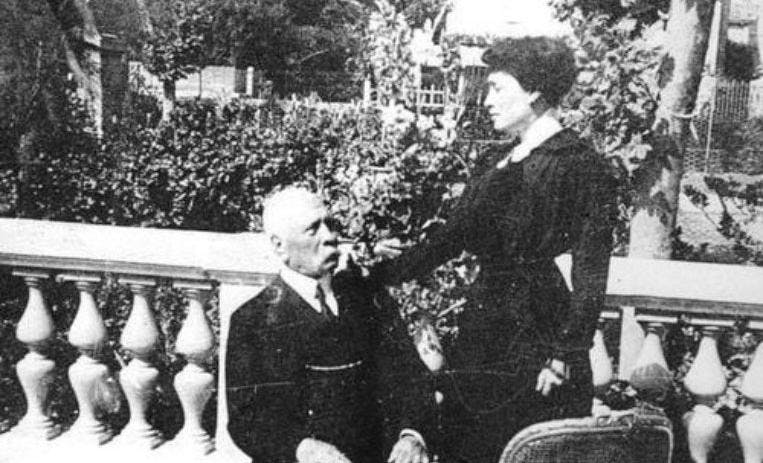
El Porfiriato – the Second Term and Beyond:
People of Mexican History
True to his principle of single-term presidencies, when his term expired, Diaz worked to elect his ally Manuel González to the Mexican presidency. Perhaps it is in the context of Diaz's hard-won American camaraderie that we can understand Porfirio Díaz’s ire when Manuel González’s presidency ran into financial problems—so much so that the government went bankrupt. This brought political opposition to González where his political opponents were convinced that the administration’s failings were due to Manuel González’s personal corruption. Porfirio Díaz took the opportunity to run for president a second term.
Naturally, considering that he had run on a platform of no re-election, Porfirio Díaz’s critics were quick to bring up the former president’s hypocrisy. Díaz had the constitution amended to allow a second term (and then later had it amended again to allow for no restrictions whatsoever). Porfirio Díaz would serve for another 26 years as president and would be re-elected four more times—every time with ludicrously-high margins. Once, he even claimed to have won unanimously.
Porfirio Díaz’s Presidential Style –
Though in Díaz’s early military career, he had been an ideologue siding with radical liberals in the mountains of Oaxaca, once he took power he displayed a shrewd, pragmatic approach to politics—a matter with which he took great pride. He was not opposed to securing power through patronage to his political allies.
However, he always kept force as an option—which was a serious thread considering Díaz’s military talents. Similar to Pablo Escobar’s motto of “plata o plomo” (meaning “silver or lead”—alluding to lead bullets), Porfirio Díaz would resolve conflict through “pan o palo” (meaning “bread or the bludgeon”).
His authoritarian style came to create the kind of stable climate that is necessary for industry to take root and thrive. His efforts to lure American investment and build an industrial infrastructure drew Mexico into the 20th Century. In the end, this policy of defensive modernization was another manifestation of his pragmatic approach to all issues. If you’re weak compared to the United States, you might as well take advantage of that fact—in effect, selling Mexican influence for American investment.
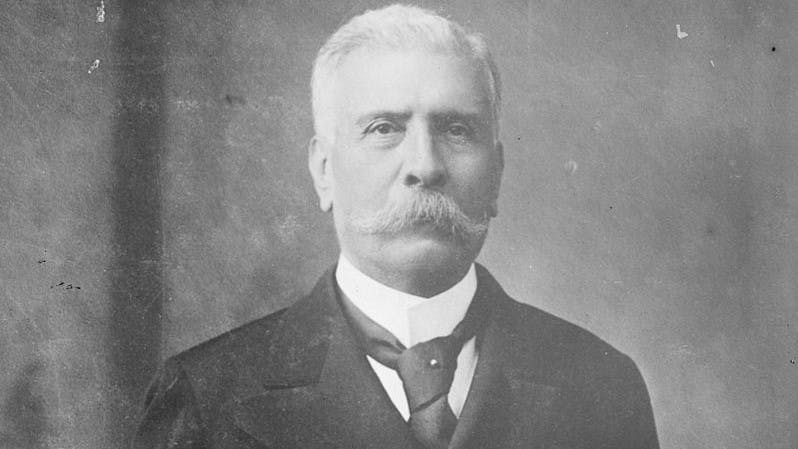
El Porfiriato – Controversy:
People of Mexican History
Porfirio Díaz is characterized first and foremost by his authoritarian approach to leadership. History has classically referred to him as a “republican monarch”. Many Mexicans call him a dictator which took a revolution to overthrow. However, some have argued that perhaps Mexico has judged Díaz too harshly.
Porfirio Díaz did anything to hold on to power—often resorting to coercion. However, he also relied heavily on cooptation. For example, instead of posting cabinet members from his own political party, he chose cabinet members from all parties—even those that had traditionally opposed him—and he was able to bribe them with money that he had helped to secure from foreign investments. Perhaps his legacy seems to have been dragging Mexico kicking-and-screaming into the Industrial Age.
He was able to make peace with the Catholic Church and the Freemasons of Mexico because, though he was the head of the Freemasons in Mexico, he was also an important advisor to several Bishops. He gave the church a unique level of autonomy—neither antagonizing the Catholic Church nor ardently supporting them.
Porfirio Díaz also managed to satisfy Mestizos and even some indigenous leaders by giving them political positions. He then shrewdly made them act as intermediaries for his foreign investment interests so that practically no opposition would fall on his own lap. Instead, they grew wealthier—in effect, folding them into the upper class.
Some have argued that Porfirio Díaz’s reputation as a despot stems from Revolutionary propaganda. They point to the rise of antiporifirismo as appearing at the start of the Mexican Revolution as a rhetorical tool to combat the cult of personality that had risen around him.
Nevertheless, the facts of history remain untouched. He grabbed power by force when he lost a corrupt election, then he ran on a platform of no reelection. After his first tenure, he later ran for reelection and kept power through corrupt elections. One is reminded of Thomas Jefferson and the Louisiana Purchase. Sure Jefferson was a Jeffersonian until he himself was in power.
Porfirio Díaz suppressed the formation of any opposing political parties. He then dissolved all the past vestiges of federalism and the local authorities. Governors answered only to him. The legislative and judicial branch was comprised entirely of his most ardent supporters and closest friends. Porfirio Díaz suppressed a free press and rigged the judicial system. Virtually in every fashion, congress was simply there to implement his vision for Mexico. He expanded the rogue police force called Los Rurales who had been founded by President Benito Juarez—and were loyal to the president.
Díaz brought mining to Mexico, which in turn brought all manner of cultural influences. Under Porfirio Díaz, the peso was 3:1 USD. Mexico was considered among the great economic powers of the time, with France, Germany, and Great Britain. Had there been no revolution, perhaps Mexico would be among the developed nations of the world. However, income inequality in Mexico was egregious—almost to the levels of the feudalism still found in Russia before their revolution. Workers were indentured servants and shockingly impoverished.
Revolution and Exile:
People of Mexican History
After Porfirio Díaz declared himself the winner of an eighth term in the election of 1910, the people of Mexico had had enough. His election opponent Francisco I. Madero called for a rebellion which led to the outbreak of the Mexican Revolution. This time, the opposition was too great; and after a series of defeats of the Federal Army, Díaz was forced to resign. He fled to exile in Paris, where he died four years later.
Though numerous attempts have been made to bring his mortal remains home to his ancestral state of Oaxaca—the latest taking place in 2014, they still lie in Paris.
Rafael Bracho
Insurance Expert & Writer
For several years, Rafael has been crafting articles to help expats and nomads in their journey abroad.
Get Protected While Living Abroad
Found this article helpful? Make sure you have the right insurance coverage too. Get instant quotes for international health, life, and travel insurance.
Takes 2 minutes • Compare multiple providers • Expert advice

